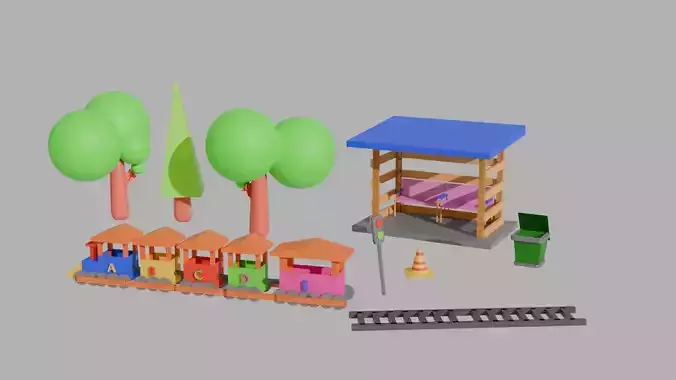1/13
For Games and AnimationsOptimization: Ensure your models are optimized for performance. Keep the polygon count low while maintaining the essential details that make the train recognizable.Stylized Design: Embrace the low poly aesthetic by using stylized designs. Simplify shapes and exaggerate key features for a unique look.Textures and Materials: Use flat colors or simple textures to enhance the low poly style. Avoid high-resolution textures that can clash with the aesthetic.Rigging and Animation: If the train will be animated, ensure the model is properly rigged. Keep the rig simple to match the low poly style.Consistency: Maintain a consistent style throughout the project. This includes colors, shapes, and the overall design approach.For 3D PrintingStructural Integrity: Ensure your model has no thin or fragile parts that might break during printing or handling.Printable Details: Simplify details to ensure they print well. Tiny details may not come out as intended.Support Structures: Design with support structures in mind to avoid overhangs that can’t be printed without additional supports.Scale: Consider the final size of the printed model. Ensure that small parts are scaled up to be printable.Material ColorsBold and Simple Colors: Use bold, solid colors that complement each other. This can enhance the visual appeal of the low poly style.Material Choice: For games and animations, you can experiment with different shaders to create unique looks. For 3D printing, choose filament colors that match your design vision.General TipsReference Real Trains: Look at images of real trains for inspiration. Focus on capturing the essence of their design in a simplified form.Iterate: Start with a rough model and iterate, refining the design and details as you go.Feedback: Get feedback from others to improve your design. Sometimes fresh eyes can spot areas for improvement.
REVIEWS & COMMENTS
accuracy, and usability.













